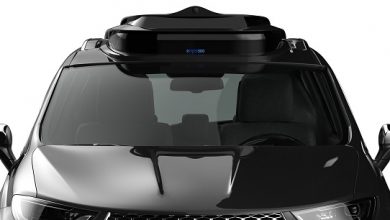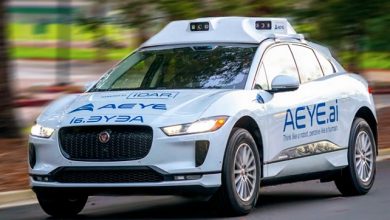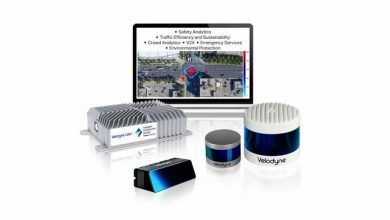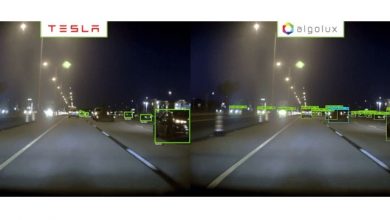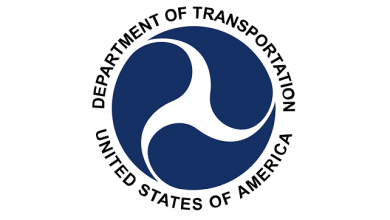Heavy-Duty autonomous vehicle market set for rapid growth: Comprehensive analysis and forecast 2023-2032

Global Heavy-Duty Autonomous Vehicle Market to Reach $1,453.20 Billion by 2032. Heavy-Duty Autonomous Vehicle Market Overview. The global heavy-duty autonomous vehicle market was valued at $135.25 billion in 2022 and is anticipated to reach $1,453.20 billion by 2032, witnessing a CAGR of 27.42% during the forecast period 2023-2032.
New York, July 05, 2023 (GLOBE NEWSWIRE) — Reportlinker.com announces the release of the report “Heavy-Duty Autonomous Vehicle Market – A Global and Regional Analysis: Focus on Application, Propulsion Type, Vehicle Type, Level of Autonomy, Sensor Type, and Region – Analysis and Forecast, 2023-2032” – https://www.reportlinker.com/p06472370/?utm_source=GNW
The growth in the heavy-duty autonomous vehicle market is expected to be driven by growing demand for autonomous driving, rising developments and integration of heavy-duty autonomous vehicles in public transport for semi-autonomous and autonomous vehicles.
Introduction of Heavy-Duty Autonomous Vehicle
Heavy-duty autonomous vehicles are self-driving vehicles designed to operate in applications that require high load-carrying capacity and the ability to navigate challenging terrain, including construction sites, mining operations, and transportation of goods and materials.Heavy-duty autonomous vehicles use a range of technologies, including LiDAR sensors, GPS, and advanced algorithms, to navigate their environment and make decisions about how to operate safely and efficiently.
They can be electric or powered by internal combustion engines and are typically designed to operate continuously with minimal human input.Heavy-duty autonomous vehicles offer a range of benefits, including increased safety, improved efficiency and productivity, and reduced labor costs.
They are being developed and deployed by a range of companies in the transportation, logistics, construction, and mining industries and are expected to play an increasingly important role in the future of these industries as technology continues to advance.
Market Introduction
The heavy-duty autonomous vehicle market is still in its early stages of development and adoption, with limited commercial deployment and a smaller number of players involved in the market.The market is primarily focused on industrial applications, such as mining, construction, and logistics, where there is a significant need for large, powerful vehicles that can operate autonomously in challenging environments.
The heavy-duty autonomous vehicle market is currently smaller than the overall autonomous vehicle market, but it is expected to grow rapidly in the coming years as the technology continues to advance and the benefits of autonomous operation become more widely recognized. There is significant interest and investment in the development of heavy-duty autonomous vehicles, with many companies competing to establish a foothold in this emerging market.
Industrial Impact
The heavy-duty autonomous vehicle market is driven by several factors, such as rising demand for vehicles equipped with autonomous driving capabilities and developments of high-tech autonomous solutions for commercial vehicles. Autonomous vehicles are increasingly growing in demand, owing to benefits such as increased vehicle and driver safety features, and enhanced fuel/battery power efficiency.
The key players operating in the heavy-duty autonomous vehicle market include Daimler AG, Volvo Group, Caterpillar, Proterra, and Zoox Inc.These companies are focusing on strategic partnerships, collaborations, and acquisitions to enhance their product offerings and expand their market presence.
In conclusion, the market for heavy-duty autonomous vehicles is growing and evolving significantly because of factors such as rising safety and efficiency concerns, technological breakthroughs, and the demand for reliable modes of transportation solutions.
Market Segmentation:
Segmentation 1: by Application
• Logistics
• Public Transportation
• Construction and Mining
• Others
Public Transportation to Dominate the Heavy-Duty Autonomous Vehicle Market (by Application)
Public transportation is leading the heavy-duty autonomous vehicle market compared to logistics, construction, and mining for several reasons.Firstly, public transportation is often seen as a more established and regulated industry, which can make it easier for autonomous vehicle manufacturers to introduce their technology.
There is also a greater potential for cost savings through the implementation of autonomous public transportation systems, as they can operate with fewer drivers and provide more efficient services.Secondly, public transportation is often viewed as a more socially responsible industry, and there is a growing emphasis on reducing carbon emissions and promoting sustainable transportation options.
Autonomous buses and trains can run on electric power, further reducing harmful emissions and negative environmental impact.
Segmentation 2: by Propulsion Type
• Internal Combustion Engine Vehicles
• Electric Vehicles
Electric Vehicles Segment to Grow at a Significant Growth Rate in the Heavy-Duty Autonomous Vehicle Market (by Propulsion Type)
Electric vehicles (EVs) require more advanced technology as compared to internal combustion engine (ICE) vehicles.Electric vehicles are leading the heavy-duty autonomous vehicle market when compared to internal combustion vehicles due to several reasons.
Electric vehicles are considered to be more environment-friendly and sustainable compared to internal combustion vehicles, as they produce zero tailpipe emissions and have a lower carbon footprint.This aligns with the growing trend toward reducing carbon emissions and promoting sustainability across industries.
Moreover, electric vehicles are generally quieter and offer a smoother ride than internal combustion vehicles, which can be beneficial in certain industries, such as public transportation, where noise and vibration can be a concern.Also, advancements in battery technology and charging infrastructure have made electric vehicles more practical and convenient for heavy-duty applications.
With rapidly developing charging infrastructures and longer driving range capabilities, electric vehicles can now compete with internal combustion vehicles in terms of performance and practicality.
Segmentation 3: by Vehicle Type
• Heavy Trucks
• Heavy Buses
• Roboshuttles
Heavy Buses Segment to Grow Considerably in the Heavy-Duty Autonomous Vehicle Market (by Vehicle Type)
Heavy buses have several advantages over heavy trucks and roboshuttles, making them easier to implement with autonomous technology.For example, heavy buses are typically used for fixed-route transportation, making it easier to develop and test autonomous systems in a controlled environment.
Additionally, buses often travel on highways and other well-defined routes, making implementing autonomous driving technologies easier.There are also several potential benefits to using autonomous buses.
For instance, they could help reduce traffic congestion and improve safety by reducing the risk of accidents caused by human error.They could also help reduce emissions by allowing for more efficient and streamlined transportation.
However, factors such as cost and regulatory issues could negatively impact the adoption of heavy buses.
Segmentation 4: by Level of Autonomy
• Semi-Autonomous Vehicles
• Autonomous Vehicles
Semi-Autonomous Vehicles to Dominate the Heavy-Duty Autonomous Vehicle Market (by Level of Autonomy)
Semi-autonomous vehicles can offer a greater degree of operational efficiency.By eliminating the need for human input, autonomous vehicles can operate continuously and with greater precision, reducing the risk of accidents or errors.
This can result in increased productivity, lower operating costs, and improved overall performance for companies that use heavy-duty autonomous vehicles for transportation and logistics.Furthermore, the technology for semi-autonomous vehicles is advancing rapidly, with significant investments being made by companies in the transportation, logistics, and technology industries.
This is driving innovation and accelerating the development of new and more sophisticated autonomous systems, which are expected to deliver even greater benefits in terms of safety, efficiency, and performance.
Segmentation 5: by Sensor Type
• LiDAR
• RADAR
• Camera
• Others
LiDAR Segment to Dominate the Heavy-Duty Autonomous Vehicle Market (by Sensor Type)
Light Detection and Ranging (LiDAR) offers a high level of accuracy and precision in object detection and mapping, which is critical for the safe and efficient operation of heavy-duty autonomous vehicles.LiDAR sensors use laser beams to create detailed 3D maps of the surrounding environment, allowing the vehicle’s autonomous system to accurately identify and track objects, including other vehicles, pedestrians, and obstacles.
LiDAR offers superior performance in adverse weather conditions, such as rain, snow, and fog, which can impair the effectiveness of other sensor technologies, such as cameras and RADAR. LiDAR sensors are less affected by these weather conditions as they use laser beams rather than radio waves or visual imaging.
Segmentation 6: by Region
• North America: U.S., Canada, and Mexico
• Europe: Germany, France, Italy, and Rest-of-Europe
• U.K.
• China
• Asia-Pacific and Japan: Japan, South Korea, India, and Rest-of-Asia-Pacific and Japan
• Rest-of-the-World
The North America region is expected to dominate the heavy-duty autonomous vehicle market, owing to the presence of several established manufacturers.There are also several regulatory and policy initiatives in North America that are designed to encourage the development and adoption of autonomous vehicles, including heavy-duty vehicles.
However, the Rest-of-the-World region is expected to witness significant growth due to the increasing demand for efficient transportation solutions and the rising number of road accidents.
Recent Developments in the Heavy-Duty Autonomous Vehicle Market
• In March 2023, ZF Friedrichshafen AG Group expanded operations in Juarez, Mexico, and announced a $194.0 million investment to support the growth of eMobility.
• In February 2023, Torc Robotics signed an agreement to acquire Algolux Inc. Torc purchased Algolux for its highly regarded intellectual property and know-how in computer vision and machine learning.
• In January 2023, Kodiak Robotics, Inc. and Ambarella, Inc., which is an AI semiconductor firm, entered a partnership to incorporate Ambarella’s CV2AQ AI perception system-on-chip (SoC) into its self-driving trucks for all camera data processing.
• In May 2022, U.S. Xpress joined forces with Embark Trucks, Inc., a pioneer in the development of autonomous technologies for the transportation sector. U.S. Xpress intended to expand the Embark Coverage Map to include its terminals.
Demand – Drivers, Limitations, and Opportunities
Market Demand Drivers:
Rising research and development expenditures, along with the development of several autonomous software and hardware technologies across the globe, are supporting the integration of autonomous vehicles in public transport.With the usage of GPS technology, cameras, sensors, and artificial intelligence (AI), buses can carry passengers without any human intervention.
Europe is at the forefront of adopting autonomous buses in public transport with large research and development investments in the automotive sector. According to the European Automobile Manufacturers’ Association (ACEA) report published in April 2022, the automotive sector in the region invested around $64 billion for FY2020 and was leading across the top 10 industrial sectors in the European Union (EU).
According to World Economic Forum, the European consortium ULTIMO is developing automated minibus services across three cities of the region, including Kronach (Germany), Oslo (Norway), and Geneva (Switzerland).The project would run for over four years with a budget of around $60 million from 2022 to 2025.
As a result, in 2025, around 45 driverless minibusses are expected to be on the road.This project is expected to pave the path for the adoption of heavy-duty buses in the upcoming years.
Additionally, in January 2023, Stagecoach announced the completion of the first full-size autonomous bus testing process in the U.K. Once the registration process is complete, this bus service is expected to offer a capacity of around 10,000 journeys per week. The company further announced on 4th April 2023 that the bus services would begin in East Scotland from 15th May 2023 onward.
Market Challenges:
Challenges such as rising prices of components and raw materials, transition in the end-use market from established to developing countries, and soaring manufacturing costs all impede the global market’s expansion.Another issue confronting autonomous technology and components is a scarcity of industry-wide similar testing procedures and certification requirements for sensors.
Due to the absence of standardized testing protocols for high-tech hardware components and software technologies, companies have continued to struggle with accuracy and performance assurance, with many relying on internal testing protocols.Further, the rising logistics costs of transporting hardware components from one country to another add to the burden on end-user pricing.
Further, the technology development costs associated with several components are higher, which adds another level of cost to the overall prices of components.
Furthermore, price fluctuations are a barrier for any industry or corporation that uses level 4 and above technology sensors in its value-chain creation.Uncertainty has a significant negative impact on the values of fully autonomous vehicle sensors, and the effect is exacerbated during volatile markets, emphasizing that massive increases in volatility cause breakdowns in the heavy-duty autonomous vehicle market.
Market volatility has also been found to be especially persistent, implying that significant government intervention may be required to maintain equilibrium. Further, the technology testing and approval costs are higher and vary as per regulations in each country.
Additionally, constitutional provisions, inflation, and shipping all contribute to an increase in overall costs.As a result of these factors, the market for heavy-duty autonomous vehicles is attempting to achieve a stable balance with significantly lower prices.
Thus, the large price swings associated with technological developments have had a significant impact on end-use industries and hampered market growth.However, technological developments such as the development of LiDAR system-on-chip (SoC) along with the commercialization of products are showing a significant decrease in the prices of products.
All these developments are expected to minimize the adverse impact on the market and support market growth over the forecast period.
Market Opportunities:
Logistics is one of the key industries for economic growth. According to the World Economic Forum, trucking industry costs are projected to reach around $5.5. trillion by 2027. Trucking is the dominant mode of transportation in several regions, including North America, Asia-Pacific, and others. According to the American Trucking Association (ATA), the U.S. inland freight transport was dominated by trucking, with around 68% of logistics revenue in 2019. Several heavy-duty truck manufacturers are increasingly adopting advanced technologies such as telematics and advanced driver assistance system (ADAS). The increase in the overall complexity of the trucking system caused concern about a rise in maintenance costs. Further growing shortage of skilled drivers has been a major concern in the trucking industry. The adoption of autonomous vehicles is expected to be one of the key solutions to the shortfall of drivers. The following chart depicts the expected shortfall of truck drivers in the U.S.
Significant skills are required to operate a class 8 truck.The significant size and weight of these trucks imply the consequences of accidents are severe, with high fatality rates.
The financial costs related to such accidents are high, and it additionally involves costs associated with driver downtime. According to the Federal Motor Carrier Safety Administration (FMCSA) large truck and bus crash facts 2020, published in 2022, 4,842 large trucks were involved in fatal crashes during FY2020.
Autonomous vehicles are expected to minimize the costs associated with drivers, along with enhancing road safety, which will further support the market growth. The rising investment by several software and advanced sensor developers to improve the overall heavy-duty autonomous vehicle market is expected to offer lucrative opportunities for market expansion over the forecast period.
How can this report add value to an organization?
Product/Innovation Strategy: Globally, the leading autonomous vehicle OEMs are continuously working to manufacture and sell vehicles with higher autonomous driving capabilities, i.e., level 3 and above. The growing need for affordable and high-performing heavy-duty autonomous vehicles is one of the major factors for the growth of the heavy-duty autonomous vehicle market. The market is more on the consolidated side at present, where heavy-duty autonomous vehicle manufacturers have been successful to a certain extent in strengthening their market position in the global market, with a few autonomous vehicle OEMs and autonomous vehicle technology providers working on such solutions in-house. However, with the rise of autonomous driving, the existing established players are expected to face stiff competition from emerging players. Moreover, partnerships and collaborations are expected to play a crucial role in strengthening market position over the coming years, with the companies focusing on bolstering their technological capabilities and gaining a dominant market share in the heavy-duty autonomous vehicle industry.
Growth/Marketing Strategy: The heavy-duty autonomous vehicle market has been growing at a rapid pace.The market offers enormous opportunities for existing and emerging market players.
Some of the strategies covered in this segment are mergers and acquisitions, product launches, partnerships and collaborations, business expansions, and investments. The strategies preferred by companies to maintain and strengthen their market position primarily include partnerships, agreements, and collaborations.
Competitive Strategy: The key players in the heavy-duty autonomous vehicle market analyzed and profiled in the study include multiple vehicle type manufacturers, bus manufacturers, truck manufacturers, roboshuttle manufacturers, and autonomous vehicle technology providers that develop, maintain, and market heavy-duty autonomous vehicles.Moreover, a detailed competitive benchmarking of the players operating in the heavy-duty autonomous vehicle market has been done to help the reader understand the ways in which players stack against each other, presenting a clear market landscape.
Additionally, comprehensive competitive strategies such as partnerships, agreements, and collaborations are expected to aid the reader in understanding the untapped revenue pockets in the market.

